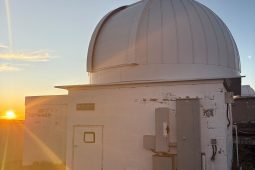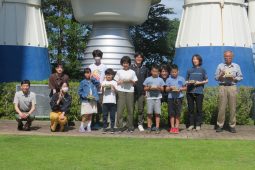PPARC セミナー (2024/10/04)

PPARC セミナー (2024/10/04)
(1) Riku Kikuchi
[Title]
EMIC Waves Converted From Equatorial Noise Due to M/Q = 2 Ions in the Plasmasphere: Observations From Van Allen Probes and Arase
(Y.Miyoshi, 2019)
[Abstract]
Equatorial noise (EN) emissions are observed inside and outside the plasmapause. EN emissions are referred to as magnetosonic mode waves. Using data from Van Allen Probes and Arase, we found conversion from EN emissions to electromagnetic ion cyclotron (EMIC) waves in the plasmasphere and in the topside ionosphere. A low‐frequency part of EN emissions becomes EMIC waves through branch splitting of EN emissions, and the mode conversion from EN to EMIC waves occurs around the frequency of M/Q = 2 (deuteron and/or alpha particles) cyclotron frequency. These processes result in plasmaspheric EMIC waves. We investigated the ion composition ratio by characteristic frequencies of EN emissions and EMIC waves and obtained ion composition ratios. We found that the maximum composition ratio of M/Q = 2 ions is ~10% below 3,000 km. The quantitative estimation of the ion composition will contribute to improving the plasma model of the deep plasmasphere and the topside ionosphere.
(2) Naoko Takatori
[Title]
Photoionization Loss of Mercury’s Sodium Exosphere: Seasonal Observations by MESSENGER and the THEMIS Telescope (Jasinski, Jamie M. et al., 2021)
They present the first investigation and quantification of the photoionization loss process to Mercury’s sodium exosphere from spacecraft and ground-based observations. They analyze plasma and neutral sodium measurements from NASA’s MESSENGER spacecraft and the THEMIS telescope. They find that the sodium ion (Na +) content and therefore the significance of photoionization varies with Mercury’s orbit around the Sun (i.e., true anomaly angle: TAA). Na + production is affected by the neutral sodium solar-radiation acceleration loss process. More Na+ was measured on the inbound leg of Mercury’s orbit at 180°–360° TAA because less neutral sodium is lost downtail from radiation acceleration. Calculations using results from observations show that the photoionization loss process removes ∼10 24 atoms/s from the sodium exosphere (maxima of 4 × 10 24 atoms/s), showing that modeling efforts underestimate this loss process. This is an important result as it shows that photoionization is a significant loss process and larger than loss from radiation acceleration.





